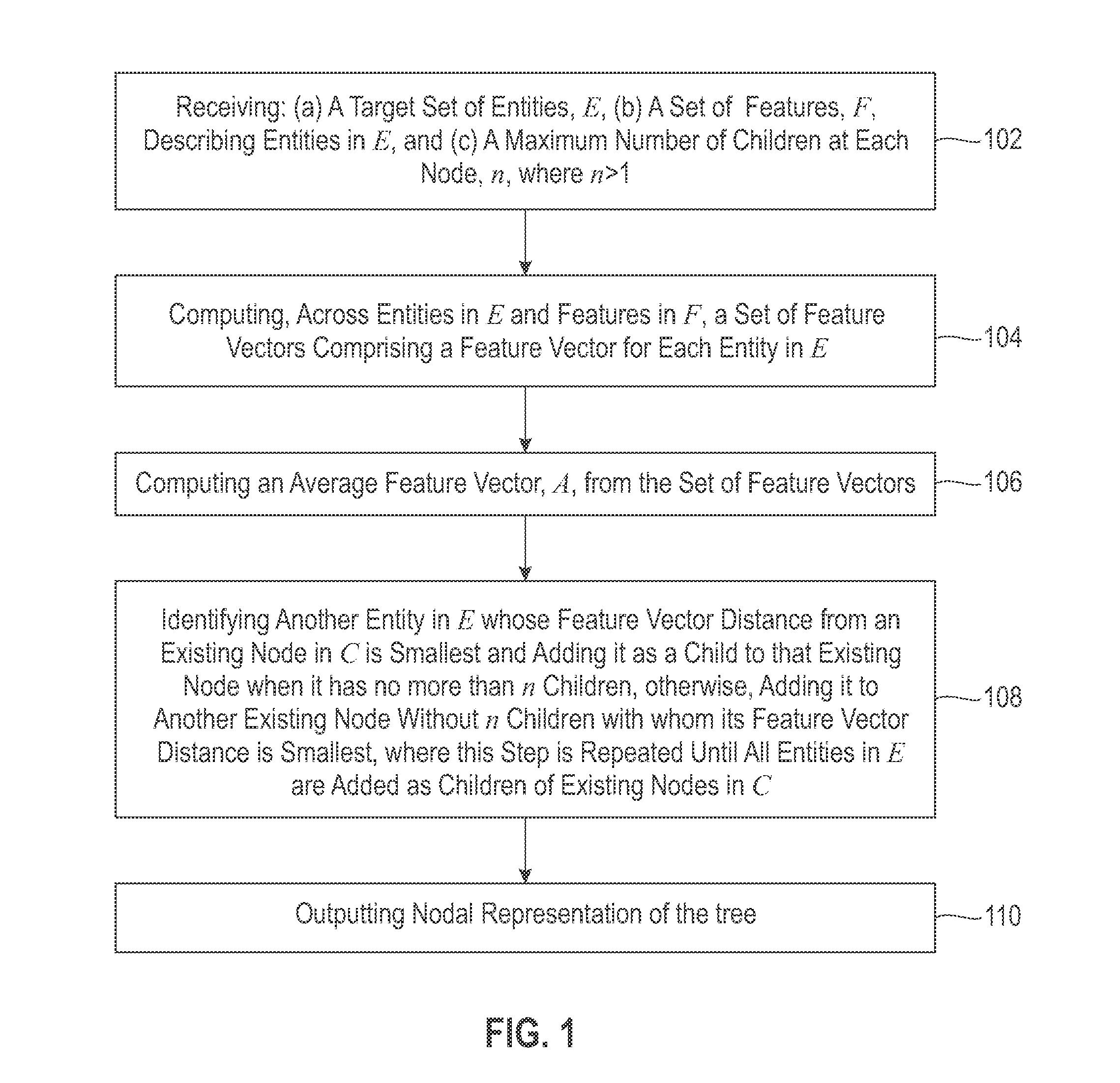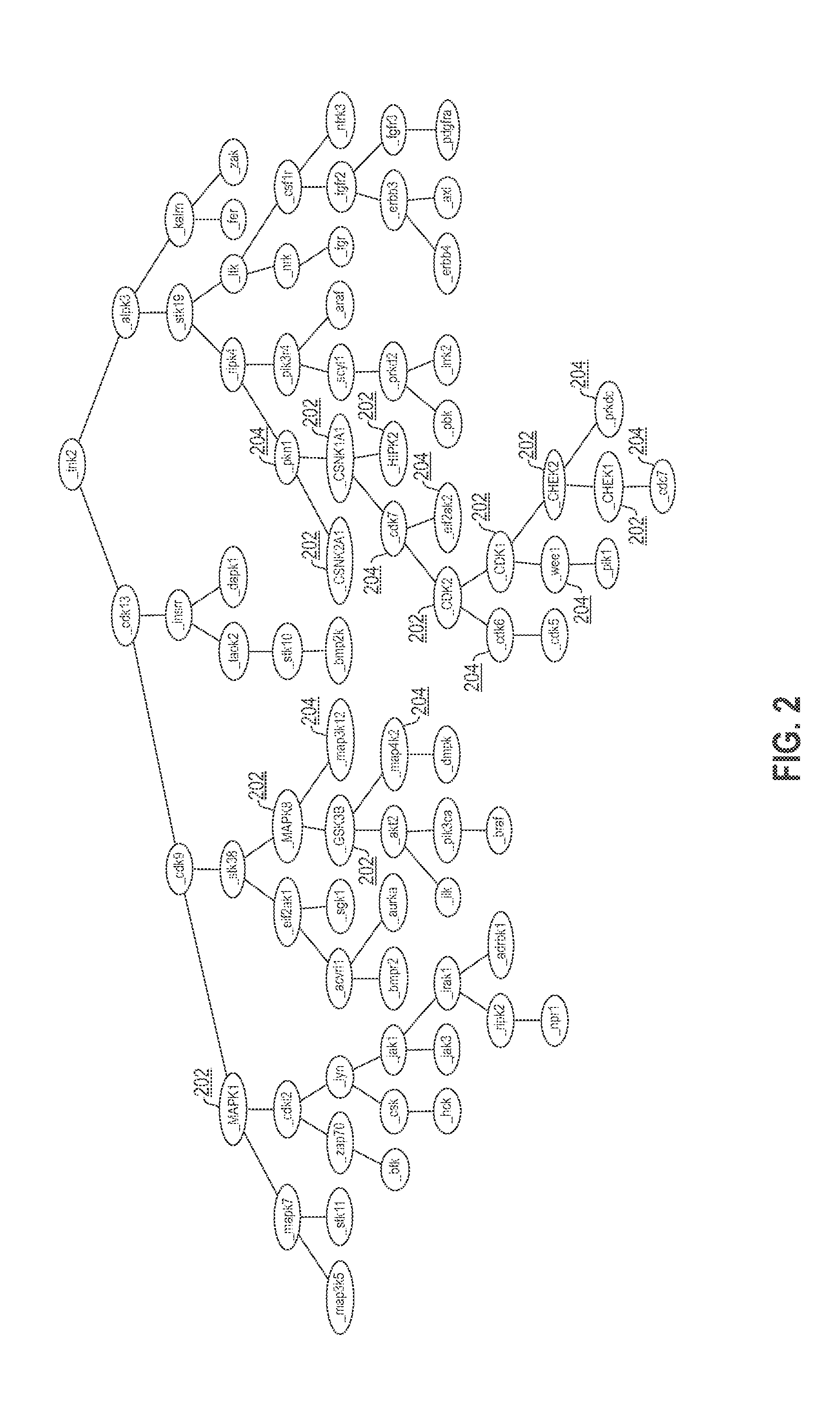Building Entity Relationship Networks from n-ary Relative Neighborhood Trees
a technology of relative neighborhood trees and entity relationships, applied in the field of building entity relationship networks from nary relative neighborhood trees, can solve the problems of not being able to comprehend mathematically optimal diagrams, unable to present regularized structures that make the network visually graspable for human comprehension, and becoming nearly impossible for domain experts to comprehend
- Summary
- Abstract
- Description
- Claims
- Application Information
AI Technical Summary
Benefits of technology
Problems solved by technology
Method used
Image
Examples
example
[0040]One example of creating a binary relative neighborhood network was done around P53 kinases. The methodology used created a model of each protein kinase that is based on the Medline® abstracts that contain only that kinase and no others. The feature space of this model is the words and phrases contained in those abstracts. The distance metric is then the cosine similarity (i.e., calculation of angle between the lines that connect each point to the origin) between each kinase's centroid (average of all feature vectors for all abstracts containing the kinase). This distance matrix can then form a similarity graph which can be visualized and reasoned over to identify suspect p53 kinases. These can then be confirmed through experimentation. This method predicted that kinases not previously known to target p53 might indeed do so.
[0041]The kinase network diagram generated according to the teachings of the present invention is depicted in FIG. 2. In FIG. 2, a plurality of nodes labele...
PUM
 Login to View More
Login to View More Abstract
Description
Claims
Application Information
 Login to View More
Login to View More - R&D
- Intellectual Property
- Life Sciences
- Materials
- Tech Scout
- Unparalleled Data Quality
- Higher Quality Content
- 60% Fewer Hallucinations
Browse by: Latest US Patents, China's latest patents, Technical Efficacy Thesaurus, Application Domain, Technology Topic, Popular Technical Reports.
© 2025 PatSnap. All rights reserved.Legal|Privacy policy|Modern Slavery Act Transparency Statement|Sitemap|About US| Contact US: help@patsnap.com



